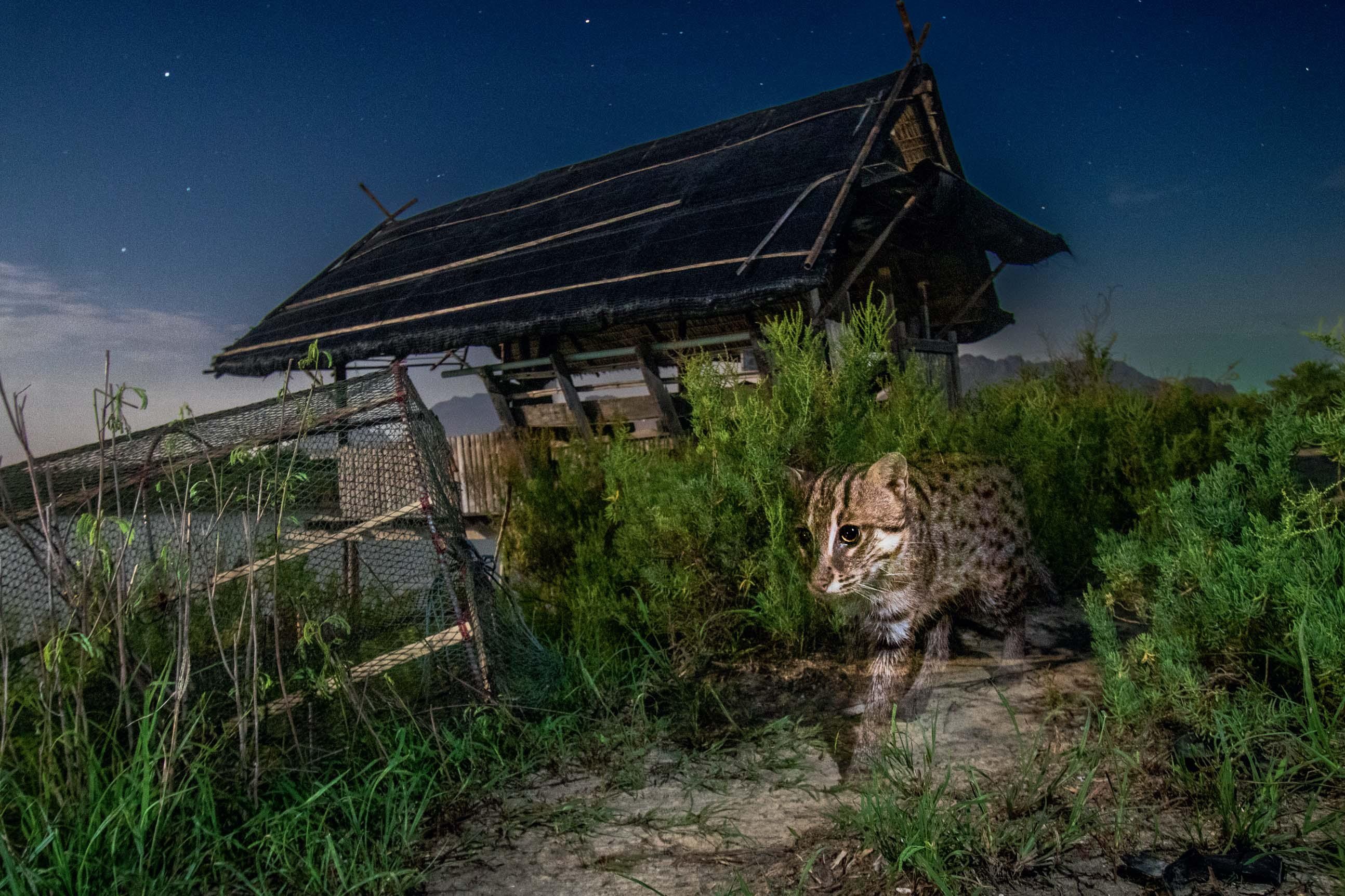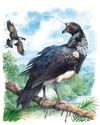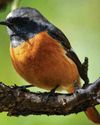NIGHT PROWL

Shining a light
A fishing cat - a medium-sized feline native to South and South-East Asia - prowls a traditional shrimp farm near the border of Khao Sam Roi Yot National Park, Thailand. This rare wetland specialist is well adapted to its watery home, with partially webbed feet and non-retractable claws for spearing slippery fish. The species is in decline across its range, largely due to habitat loss and poaching. In this part of Thailand, fishing cat habitat has become fragmented by shrimp farms and fishponds - so researchers are investigating how the animals are navigating this altered landscape.
To catch a cat
Biologists Chaiwat Klakhaeng and Wiroon Mongkonsin set a box-trap to catch a fishing cat for radio-collaring. Bait goes in the small rear section, luring the animal into the larger front section. When a cat enters the trap, it steps on a pressure plate, triggering the entrance flap to swing shut. Boxtraps are considered a very safe way of catching cats.
A changing view
Designated in 1996 as Thailand's first marine park, Khao Sam Roi Yot encompasses 98km² of coast facing the Gulf of Thailand. The area is known for its steep, forested hills and expansive marsh, but shrimp farms are dramatically altering the landscape.
Night watch
Having successfully collared a male fishing cat, Wiroon tracks him at night using special data-receiving equipment. Fishing cats are solitary and nocturnal, and thus difficult to observe in the wild.
Spots and stripes
Sometimes referred to as 'little leopards,' fishing cats sport short, muscular legs, distinct forehead stripes that break out into patchy spots, and large, close-set eyes. Females are slightly smaller than the males.
Shrimp farming
Diese Geschichte stammt aus der May 2024-Ausgabe von BBC Wildlife.
Starten Sie Ihre 7-tägige kostenlose Testversion von Magzter GOLD, um auf Tausende kuratierte Premium-Storys sowie über 9.500 Zeitschriften und Zeitungen zuzugreifen.
Bereits Abonnent ? Anmelden
Diese Geschichte stammt aus der May 2024-Ausgabe von BBC Wildlife.
Starten Sie Ihre 7-tägige kostenlose Testversion von Magzter GOLD, um auf Tausende kuratierte Premium-Storys sowie über 9.500 Zeitschriften und Zeitungen zuzugreifen.
Bereits Abonnent? Anmelden

JAWS 50 THE LEGACY
Half a century after a great white shark terrified cinemagoers, we hunt down the lasting impacts of Spielberg's blockbuster

PRIMAL SCREAM
A wildly unusual bird call shatters the peace of a tropical dawn

Find more birds more of the time with multi-spectrum binoculars from HIKMICRO
Find more birds more of the time with multi-spectrum binoculars from HIKMICRO

Losing touch with reality
As AI becomes increasingly powerful, what does it mean for the wildlife images we see?

Bongos have come home
The secretive antelope is hoping for better times in Kenya

Do animals get stressed?
We often think of stress as a bad thing, but it has evolved to protect us. When we find ourselves in life-threatening situations, our bodies prepare to fight or run.

Secrets of the Penguins
New series for National Geographic offers unprecedented insight

How I learned to speak wolf
Deep in Yellowstone's Lamar Valley, George Bumann develops a sense of what wolves' howls can mean

Which animal has the longest tail?
STRICTLY SPEAKING, THE TAIL-LIKE structures found in everything from scorpions to mayflies are not true tails. Only vertebrates – animals with a spine – are genuine tail-owners. And among vertebrates, tails are really common.

Lesser goldfinches are moving north
Warmer temperatures are leading these irrepressible golden-hued birds to expand their range in the USA
